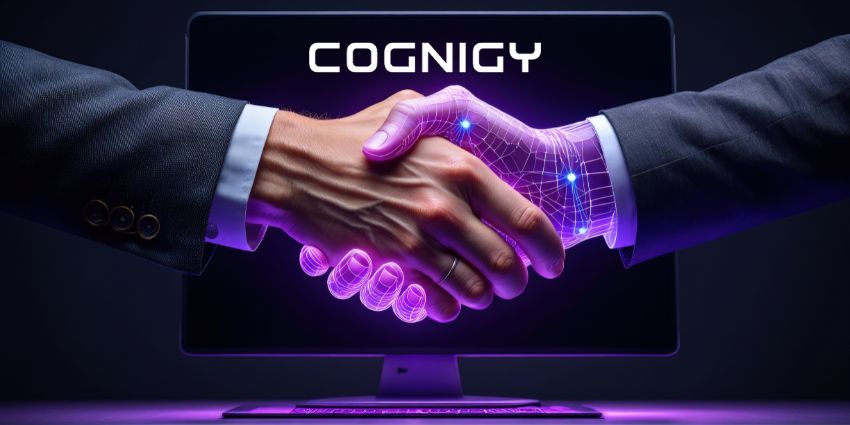Last week, Microsoft sat staunchly on the sidelines of the CCaaS space. Its Dynamics 365 for Customer Service solution had little momentum.
Moreover, updates to the solution it launched in November 2021 hardly came thick and fast. Instead, the offering remained an anemic, limbless version of the platforms provided by stalwart CCaaS providers.
Indeed, this uninspiring “test the water” launch into the CCaaS arena mirrored its entrance into the UC market in 2017. At first, Microsoft Teams lagged, but update upon update pulled the solution to the market’s precipice.
Yet, Microsoft seemingly changed tact, releasing few updates, waiting in the wings. Why? Likely because the contact center is critical to many brands, being their first line of defense and a brand differentiator.
The company – therefore – had a choice: go all-in or all-out. Its acquisition of Nuance suggested the former, as did murmurs of Microsoft preparing to “aggressively” innovate in the space.
As such, many analysts predicted a big-bang launch that would redefine Microsoft’s status as a contact center vendor. This week it happened.
Initial Impressions of the Solution
The current offering is impressive. No, it is not as well-rounded as the current industry leaders – which include Genesys, NICE, and Talkdesk, according to Gartner – but it offers building blocks that pack a punch.
By embedding Nuance conversational AI and authentication technologies, Microsoft Teams collaborative features, and Microsoft Power analytics capabilities, among many other features, the sum of its parts is striking.
Sharing his thoughts, Tom Arbuthnot, Microsoft MVP and Co-Founder of Empowering.Cloud, exclusively told CX Today:
Microsoft Digital Contact center is not a product or SKU, but more of a “playbook” or reference architecture of how you can leverage and combine Microsoft services to either augment your existing contact center or provide a true end-to-end omnichannel contact center experience.
“Of course, Microsoft would love to win end to end, but it is also totally happy to augment with existing contact center solutions where it makes sense.”
Testament to this, Microsoft Inspire event speakers banged the drum that this solution would drive “infrastructure simplicity, flexibility, and innovation.”
By repeating this message, Microsoft is seemingly aware that it will not take over the CCaaS space immediately. Instead, it will look to establish a hefty market presence by partnering with the likes of Genesys, NICE, and Avaya.
As Jeff Comstock, Vice President at Microsoft Dynamics 365, said at Microsoft Inspire:
Microsoft has a long heritage of being a platform company, and we are committed to being open, which provides ample opportunities for partners to add value to our services.
The 700 connectors The Microsoft Digital Contact Center Platform now boasts support this notion, enabling partners and customers to connect apps, data, and devices to the cloud.
Systems integrators may also benefit from full stack development, low-/no-code customization, and out-of-the-box integration options. Companies can then mix and match solutions to create unique enterprise ecosystems that drive better business and customer outcomes.
Many will likely take this option instead of a complete Microsoft CCaaS migration. Why? Because there are notable gaps within the current offering.
For example, the launch mentioned nothing of quality assurance (QA) and workforce management (WFM) technologies, now fundamental in the makeup of most modern contact center operations.
However, it is early days. Through further acquisitions, Microsoft may shortcut its way to offering a complete contact center proposition. But, its CCaaS relaunch is already sending shockwaves across the space.
Is Microsoft Just Following In the Footsteps of Salesforce and Zoom?
Many will make the case that Microsoft is simply following in the footsteps of Zoom and Salesforce by combining customer service, collaboration, and productivity tools in a central platform.
Indeed, the launch mirrors the recent release of the Zoom Contact Center in many ways, alongside Salesforce’s strategy following its Slack acquisition.
However, the move was a natural step forward, given Teams’ success. As Satya Nadella, CEO of Microsoft, stated at Microsoft Inspire:
I believe these apps could become the biggest breakthrough drivers in today’s labor market because they bring both knowledge workers and frontline workers together in the context of their communications and drive the next level of automation and productivity.
More interesting perhaps is how the addition of Nuance eclipses Zoom’s efforts to build Solvvy into its offerings, with both companies striving to seize a chunk of the chatbot market. Although, it is worth noting that Nuance had a much stronger stranglehold conversational AI space.
Here lies a significant difference in strategy. It seems that Zoom is acquiring smaller vendors to add differentiated features while using internal resources to develop core capabilities. Meanwhile, by acquiring the likes of Nuance and embedding its technology, Microsoft is taking more of a no-holds-barred approach.
Undoubtedly this is eye-catching, which is why many will consider the Nuance capabilities as critical differentiators within the new Microsoft platform. However, the addition of Microsoft Power should not go under the radar.
After all, Microsoft Power BI is the leading offering in the business intelligence space, as per the 2022 Gartner Magic Quadrant. Having these capabilities embedded into the contact center and making it easier for operations to share insights through Teams will help businesses spread customer insights across the enterprise. In time, this could redefine the role of the contact center.
Yes, Zoom offers conversational intelligence tools for sales teams, and Salesforce connects Tableau with the broader business through Slack. But, the combination of CCaaS, UC, and BI tools in one platform is exciting and may help usher in a new era for contact centers.
So, Where Does Microsoft Stand In the CCaaS Space?
Let’s not get too carried away. Microsoft does not yet offer a complete CCaaS platform like Genesys or NICE. There are considerable gaps within its native capabilities – including QA and WFM tools – which will deter many looking for an all-encompassing CCaaS platform.
However, elements within the platform can mix it with the very best. Embedded features gained from acquiring Nuance, Power BI analytics, and Teams integrations allow Microsoft to differentiate its offering and are a significant statement of intent.
What’s more, Microsoft will likely plan a sharp innovation – and possibly acquisition – curve. As Arbuthnot said:
It’s clear that Microsoft, particularly with the new strength of the Nuance acquisition, are going to push hard into the CCaaS space.
Will we see Microsoft leading analyst reports that delve into the CCaaS space before the end of the year? Unless it makes more major moves, it is unlikely. Yet, it appears to be only a matter of time.
Itching to get to grips with Microsoft’s most prominent competitors in the contact center market? If so, check out our article: 10 CCaaS Providers to Keep an Eye On in 2022







